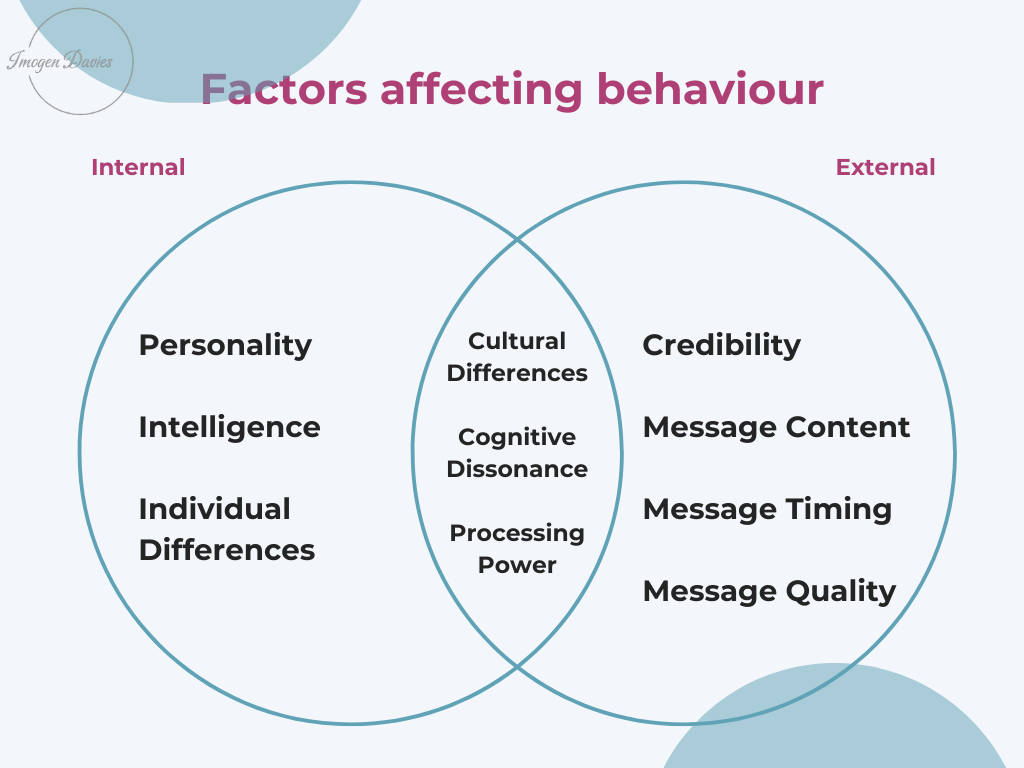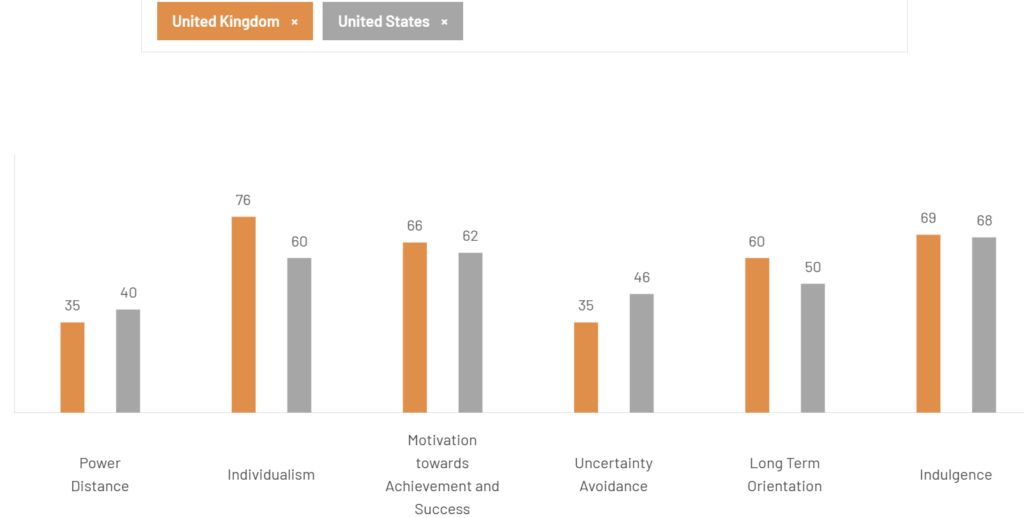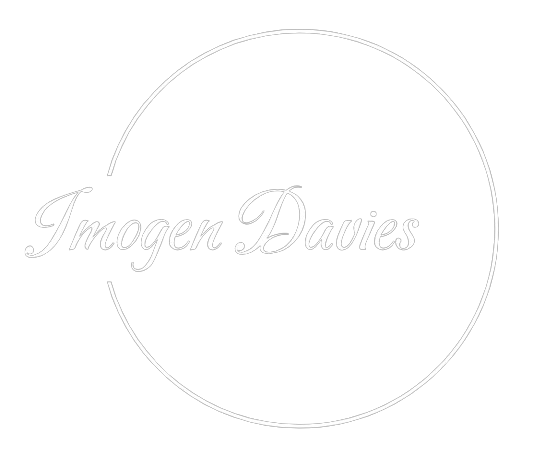Introducing Behavioural Search and its application to your strategies.
Behavioural Search might be a relatively new term to a lot of marketers, but the actual practice has been in play since digital marketing began and is built on principles as old as the human race.
We can define Behavioural Search as the way people interact with Search Engines, result pages, and individual results, built on a foundation of psychological principles that guide decision making and influence behaviour. In effect, it is the “why” of every digital marketing strategy, or at least it should be.
As marketers, when we think about behaviour we think about things that are happening on our website – what pages are people visiting, what buttons are they clicking, are they completing a conversion action? But behaviour actually starts way before they even reach your site because to do so they have to:
- Know that they need to complete a search
- Complete that search
- Evaluate the results
- Pick the one that seems the best for them
- Evaluate the content
- Determine if it is what they were looking for, or if their query is answered
- Act based on that determination
And before they have even come to the decision to search, there are hundreds of thousands of factors that led to that moment and will have influenced how that search is completed – what words are used, what device it is done on, which search engine they turn to etc.
We can’t dictate every single part of that journey, but we can tap into the predetermined factors that will help people make a decision, and that’s where Behavioural Search comes in.
What influences behaviour?
There are whole streams of psychology dedicated to finding out what makes a person behave in the way they do, some of which can be influenced by external factors such as your marketing activity and others of which we have no control over such as an individual’s personality:

What we really want to focus on as part of our marketing efforts is everything in the middle and to the right on the image above:
Cultural Differences (internal & external)
While we can’t affect where people are born or how they are raised, we can understand key differences in cultural behaviour that influence decision making.
Hofstede identified six Cultural Dimensions society uses to organise itself:
- Individualism vs. collectivism
- Power distance
- Masculinity vs. feminity
- Uncertainty avoidance
- Long-term vs. short-term orientation
- Indulgence vs. restraint
Each dimension works as a scale, so every culture and every society sits somewhere on the line based on their behavioural tendencies and as a result, no two cultures are exactly the same. They may share similar traits, and score in the same respects in some dimensions, but the makeup will be different.
An example of this can be seen below using The Culture Factor’s (previously Hofstede Insights) Country Comparison Tool to see how the UK and US score differently on each dimension:

One of the biggest applications for this in marketing is how you speak to your audience, for example people in the UK and the US will interpret the same information differently depending on how it is written or communicated to them.
If you have a multicultural audience, which let’s face it most businesses do now, you need to be able to tailor your content to their culture – simply translating it won’t be enough to meet the different needs.
Cognitive Dissonance (internal & external)
Cognitive dissonance refers to a situation where conflicting attitudes, beliefs, or behaviours lead to a feeling of mental discomfort. This in turn can lead to an alteration in one of the factors in an effort to reduce the feeling of discomfort.
Now, while that may not immediately feel like something we can control, it actually has a wide range of applications in marketing.
For example, the design of your website. People will have learned to expect a website to behave in a certain way, or buttons to provide the same function based on previous experiences with other websites. If your website is “outside the norm”, the person visiting it will enter a state of cognitive dissonance (this might be very mild, or it could be more severe depending on how rogue you’ve gone). If they are already uncomfortable browsing your site, do you think they will have a good experience and want to convert? Probably not, right? So it is important as marketers that we can provide a consistent experience and reduce friction wherever possible, starting with the design and function of our own websites.
Another prime example of this is Windows vs. Apple users – the keyboards are different, the shortcuts are different, the buttons to close/minimise/otherwise interact with documents are different and so depending on what you first started using you are more likely to continue using that OS because the other one is jarring to you – it isn’t what you are used to, and it isn’t enjoyable having to re-learn how to use a machine you feel you should be able to without issue.
We can’t control how and why people feel discomfort when browsing our website, but we can control how consistent it is with learned experiences and if we want to push boundaries, we can do so in phases.
Processing Power (internal & external)
Processing power is a tricky one because it also relies on a multitude of other factors from intelligence to personality and cultural background, but the bit we can control is how much effort it takes for a person to understand what we are saying.
Petty & Cacioppo developed the Elaboration Likelihood Model which explains how people process information through two routes – Central (high processing required) and Peripheral (low processing required). The Central route is most commonly used when we need to make decisions based on information which requires a lot of research to make sure we are making the right choice – for example, getting a mortgage or making a lifestyle change. The Peripheral route is most commonly used when we are making decisions based on cues, where the outcome won’t be significantly detrimental either way – for example, trying a new moisturiser or buying some new shoes – if they don’t work out, it’s not the end of the world so we can be less careful with our decision making process.
For most marketers, we’re looking for short-term solutions e.g. convincing someone to buy a product or enquire about a service – we’re not looking at long-lasting attitude change – so we want to focus on the “peripheral” processing route which means making your content as easy to understand as possible, with as many cues as possible to help guide a decision.
Credibility & Message factors: Hovland-Yale (external)
When we talk about “message” factors, the primary study that comes to mind is Hovland-Yale’s Attitude Change model. This model speaks to three main parts of any “message” and their roles in effective attitude change (persuasion):
- Source: Who is providing the message
- Message: The message itself
- Audience: Who is receiving the message
While the initial model itself has been criticised over the last few decades in the field of persuasion (as it doesn’t specifically state how persuasion happens, just the steps that lead to it) each of these elements can be seen in almost any marketing activity – or at least, they should be.
Source
Multiple studies have built on the original model when looking at the Source factors. One primary example of this is Bochner and Insko who found that when presented with the same information from two credible sources (an expert physiologist or a novice charity director) on the recommended amount of nightly sleep, conformity (read: persuasion) increased when the message was delivered by the expert.
People valued the credibility of the subject matter expert more than an alternative, equally trustworthy, source because they saw more of a relationship between the message and the expert, and that still holds true today.
If we think about marketing, and particularly SEO, “Expertise” is one of the primary factors when looking at “E-E-A-T” signals. A higher level of expertise in a subject matter indicates a higher level of credibility in the field, in turn increasing the likelihood the person receiving the message will trust it and/or be persuaded by it.
If you want to get a bit more clinical about it:
- Google values expert-led content because it provides a good experience for the user
- It provides a good experience for the user because the audience is more likely to take the word of an industry expert over other credible sources
- Google rewards good experiences onsite with higher rankings in the search results, allowing more people to benefit from the same information
Message
Studies have also built on the “message” element, with research from O’Keefe looking at the effectiveness of one-sided vs. two-sided arguments finding that two-sided messages were more effective at influencing attitudes than one-sided messages providing the two-sided argument eventually resulted in a solid opinion. We know from Google’s recent algorithm updates, particularly to Helpful Content (now part of the Core system), Review, and Spam systems, that more emphasis is being placed on providing both sides of an argument alongside credible and authoritative sources – for example, product reviews featuring both positive and negative aspects from a verified purchaser provide more value (and therefore hold a higher weight and offer better results) than one-sided comments. So, if we’re writing in-depth, helpful content for our audience, we should be making sure that any opinionated or subjective pieces offer both sides and end with a conclusive view for the best results.
Further studies have also looked at the importance of timing with regard to the message, with Miller & Campbell finding that when providing back-to-back messages for and against something, the first argument will be more influential (“Primacy”) but when leaving a gap between the opening statement and when the audience need to make a decision, the last message presented will be more persuasive (“Recency”). If we think about that as part of the marketing journey we can apply it to our overall campaigns, from the content written on the site through to the type of messaging included in, and frequency of, ad placements – particularly when it comes to retargeting and remarketing tactics.
Audience
Audience factors are possibly the ones most outside of our control – it is all about who receives the message and a lot of that comes down to two key elements:
- Intelligence
- Personality
Neither of these are areas we can directly influence, but if we know that they make up a large chunk of how likely someone is to be persuaded by our message then we can make sure it is catered to who we think is receiving it – this is where marketers will usually turn to ICPs (Ideal Customer Profiles) or Audience Personas.
The trouble is, audience personas or ICPs tend to focus on purely demographic fields (e.g. age, gender, nationality) without incorporating sociographic factors (e.g. education, personality, culture etc.) but if we can start to build pictures that do bring those elements together then we’ll find our messaging resonates much better with our target audience because we’re tapping into their underlying thoughts and feelings instead of just assuming everyone of a certain age, gender, and nationality behaves the same.
Applying Behavioural Search to digital marketing strategies
The more we know about how, and why, people behave in the way they do, the more we can use that to connect with them. At its most basic level, we can take four key learnings from the above:
- Studies have proven that the credibility of a source has a direct impact on persuasion = E-E-A-T isn’t just “for SEO” purposes, it goes much deeper.
- Studies have proven that the timing of a message has a direct impact on persuasion = we need to be thinking about the journey as a whole, not just their latest visit to your website, and when we think it is the “last” visit, we need to make it as persuasive as possible.
- Studies have proven people experience discomfort when met with something that goes against previous attitudes, beliefs, or behaviours = we need to make sure the experience we offer people is as consistent as possible with what they would expect to reduce friction.
- Studies have proven individual differences (culture, personality, intelligence) all play a role in how we interpret and respond to messages = we need a thorough understanding of our target audience to make sure we’re connecting with them appropriately and offering them every opportunity they need to see you as a viable option.
The beauty of Behavioural Search is that it is channel agnostic – it applies to every aspect of your marketing activity, from SEO through to Paid Search through to Social, Email, and Sales departments. If we can influence how people are finding (channel/platform) and engaging (behaviour) with our content, we can also influence what they do next by understanding what drives them to engage with it in the first place. The most common application of this is usually seen in CRO teams – testing different variables to see which version works best – but there is no reason that testing and execution should only be left to one department and if more people take responsibility for connecting and engaging with their audience, the better marketing efforts are likely to be.
Measuring the impact of Behavioural Search
Just like with CRO tests, you measure what you change. By that, I mean you look at the individual variables and how they relate to the metrics you report on. For example:
- If you change your ad copy, does it result in higher or lower levels of clicks?
- If you rewrite a blog post, do people spend more time reading it, or visit more pages afterwards?
- If you change your CTA, does it result in more conversions?
- If you change the price of a product, do more people buy it, or do overall basket values increase?
To be able to effectively measure the impact of Behavioural changes, you need to understand what you’re trying to achieve and why – everything needs to have a hypothesis just like it would if you were trying to get sign off on testing new creative. It doesn’t necessarily have to be a scientific hypothesis (e.g. “doing X will result in Y% more sales over a period of Z”) but it should at least have a focus (e.g. “doing X will allow us to see if Y happens”) to provide a guide.
Want to talk about how Behavioural Search can be factored into your existing digital marketing strategies?


